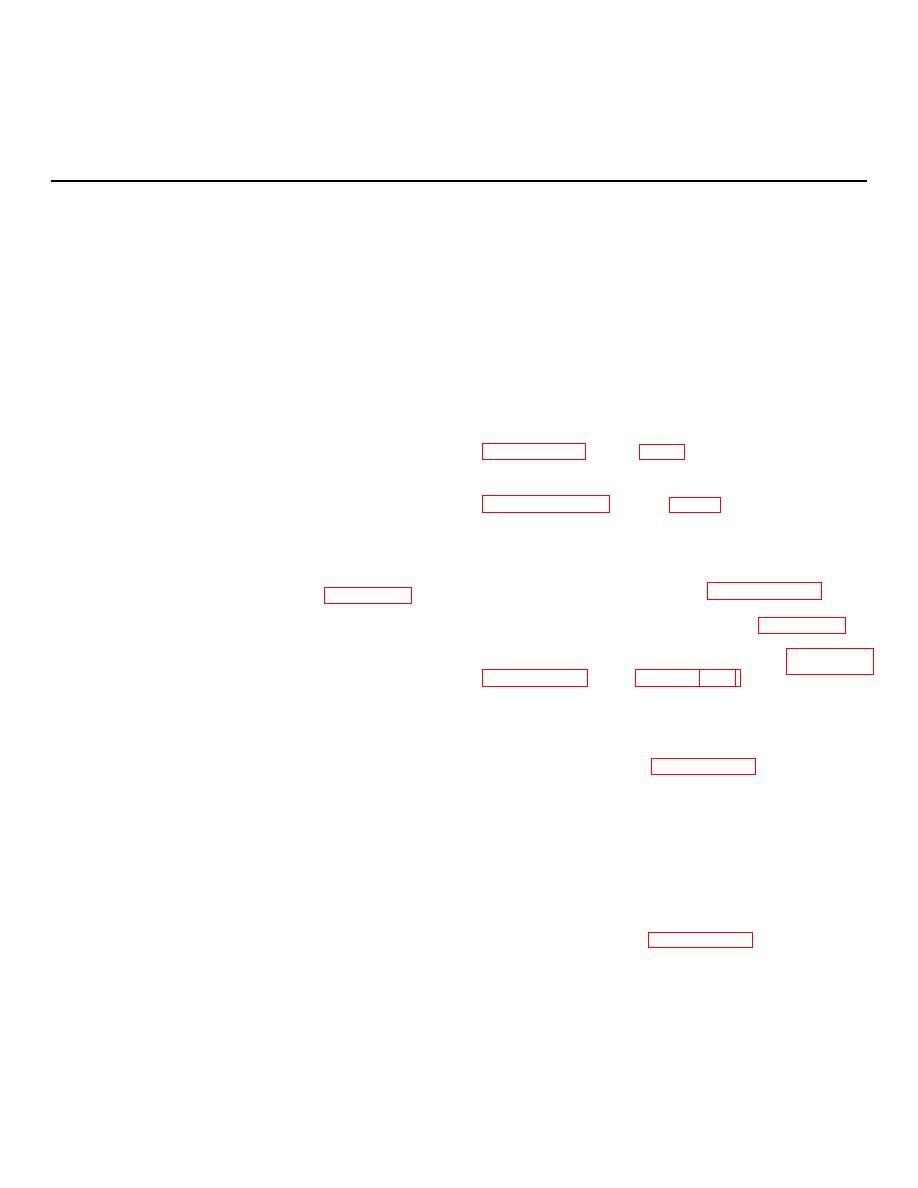 |
|||
|
|
|||
|
|
|||
| ||||||||||
|
|
 TM 9-2520-249-34&P
CHAPTER 4
TROUBLESHOOTING
the normal scope of the using organization. Check the
4-1.
Introduction
troubleshooting section of TM 9-2350-230-20-1, then
a. This chapter contains the troubleshooting
proceed as outlined in this chapter.
information for locating and correcting most of the
d. Troubleshooting, Transmission Alone. If
operating troubles which may develop in the XTG 250-
the transmission alone is received, inspection should be
1A transmission. Each malfunction for an individual
performed to verify the diagnosis made when the
component, unit, or system is followed by a list of tests
transmission was in the vehicle. This inspection, to
or inspections which will help you to determine the
uncover further defects or to determine malfunctions, is
corrective actions for you to take. You should perform
important. Often this is the only means of determining
the tests/inspections and corrective actions in the order
the malfunction without complete disassembly.
listed.
4-3.
Study of Construction, Function Required
b. This manual cannot list all possible
To perform effective troubleshooting, the mechanic
malfunctions that may occur nor all tests or inspections
must have a thorough knowledge of:
and corrective actions. If a malfunction is not listed
a. Construction
Features.
Refer
to
(except when malfunction and cause are obvious), or is
not corrected by listed corrective actions, notify your
of the transmission components.
supervisor.
b. Functions of Components.
Refer to
4-2.
Purpose of Troubleshooting
NOTE
hydraulic operations and power flow.
Information in this chapter is for use of Direct
c. Operating Instructions. Refer to TM 9-
Support and General Support maintenance
2350-230-20-1 for instructions on operating the
personnel, in conjunction with and as a
transmission.
supplement to the troubleshooting section of
TM 9-2350-230-20-1. (Refer to appendix A.) It
supply information.
provides continuation of instructions where a
e. Adjustments.
Refer to chapter 9 for
remedy in the organizational maintenance
adjustment procedures.
manual refers to supporting maintenance
f.
Oil Pressures.
Refer to table 1-1,
personnel for corrective action.
a. Damage Prevented.
4-4.
Troubleshooting-Before
Removal
or
(1) This chapter contains inspection and
Operation
trouble-shooting procedures to be performed while a
a. Preliminary Check. Do not operate the
disabled transmission is still mounted in the vehicle as
vehicle prior to completing the procedures described in
well as after it has been removed.
this paragraph. Refer to paragraph 4-2 for the purpose
(2) Operation of a deadlined vehicle
of these inspections.
without a preliminary examination can cause further
b. Inspect for Oil Leakage. Visually inspect all
damage to the transmission and possible injury to
splitlines, connections, covers, output shafts and plugs
personnel. By careful inspection and troubleshooting,
for oil leaks. Oil leakage at splitlines may be caused by
such damage and injury can be avoided. In addition,
loose bolts or defective gaskets. Tighten bolts (do not
the cause of faulty operation can often be determined
exceed torque specifications) where leakage is found. If
without extensive disassembly.
leaks continue, install new gaskets.
b. Precautions by Inspection. Most of the
c. Re-inspect for Leakage.
Inspect the
inspections are visual inspections and are to be
transmission again for oil leakage after starting the
performed before attempting to operate the vehicle.
vehicle engine. Refer to paragraph 4-5.
These inspections are mainly to determine the condition
d. Check Linkage.
Inspect for loose
and to take precautions to prevent further
components and loose, disconnected or damaged
damage.
linkage. Check linkage and operator's controls for
c. Troubleshooting while Mounted.
The
damage, wear,
troubleshooting performed while the transmission is
mounted in the vehicle is that which is beyond
4-1
|
|
Privacy Statement - Press Release - Copyright Information. - Contact Us |